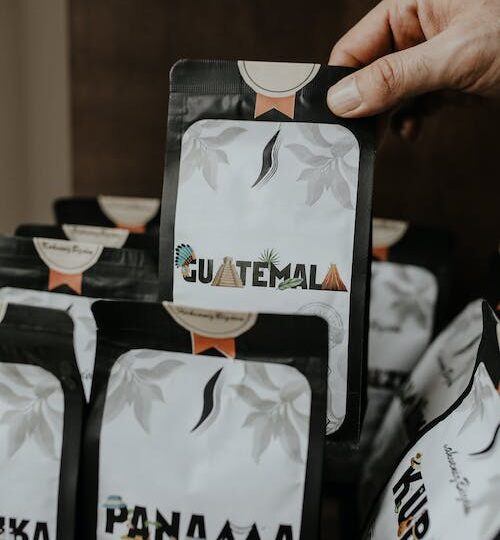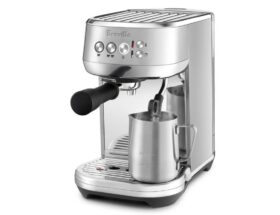
How to Guatemalan Coffee: Welcome to a captivating world!
Embark on a thrilling journey and immerse yourself in the magnificent diversity of Guatemalan coffee, a brew distinguished by its awe-inspiring range of flavors, remarkable quality, and captivating history that only enhances its allure.
Table of Contents
- The Unique Taste of Guatemalan Coffee
- A Look at Essential Coffee Equipment
- A Comprehensive Step-by-Step Guide to Making Guatemalan Coffee
- Frequently Asked Questions
- 1. What makes Guatemalan coffee unique?
- 2. What are the different types of Guatemalan coffee?
- 3 .How is Guatemalan coffee processed?
- 4. What is the best way to brew Guatemalan coffee?
- 5. Where can I buy Guatemalan coffee?
- 6. How should I store Guatemalan coffee?
- 7. What grind should I use for Guatemalan coffee?
- 8. Can I drink Guatemalan coffee black?
- 9. How does Guatemalan coffee impact the environment?
- 10. Is Guatemalan coffee fair trade?
- Conclusion
Diving Into the History and Origin of Guatemalan Coffee
Our story stretches back to the 1700s when the Jesuit missionaries introduced coffee to Guatemala. Little did they know that this humble plant would eventually catapult the nation to the high ranks of global coffee production. Let’s delve into the fascinating history that has influenced the production of this rich and exotic brew.
The Unique Taste of Guatemalan Coffee
The tantalizing flavor profile of Guatemalan coffee is a result of its native terrain. The volcanic soil, high altitude, and suitable climate contribute to the authentic flavors of the many distinct growing regions. These meticulously grown beans are then turned into a delectable drink through a precise and skillful brewing process that accentuates the bean’s innate characteristics, gifting you a coffee that lingers on the palate.
Delight in the Diversity of Guatemalan Coffee
- Antigua – Known for its complex and balanced flavors.
- Atitlan – Celebrated for its full-bodied and floral profile.
- Huehuetenango – Admired for its fruity and bright taste.
A Look at Essential Coffee Equipment
If you want to fully discover the diversity of Guatemalan coffee, you’ll need to make sure you have the right equipment. Here’s a quick guide on what you’ll need to get started:
Coffee Grinder
A good grinder can turn your beans into a consistency perfect for your brewing method. Whether you prefer a manual hand mill or electric grinder, achieving the right grind size is crucial for extracting all the rich flavors locked within Guatemalan beans.
Coffee Maker
From French press to espresso machines, Aeropress to Moka pots; the choice of coffee maker can shape the eventual taste of your coffee. It’s all about matching your brewing method to your preference of coffee strength and complexity.
Quality Water
High-quality water, often overlooked, has a profound effect on the taste of your coffee. It’s recommended to use filtered or spring water wherever possible.
Fresh Guatemalan Coffee Beans
Last but definitely not least, exploring Guatemalan coffee wouldn’t be possible without the beans themselves. Embrace the diversity of flavors by trying out beans from different regions of Guatemala, each offering distinct taste profiles.
With these items in your coffee arsenal, you’ll be well-equipped to appreciate the aromatic richness and depth of Guatemalan coffee.
A Comprehensive Step-by-Step Guide to Making Guatemalan Coffee
For those eager to explore the rich flavors of Guatemalan coffee right from your kitchen, we have a simple yet detail-oriented guide to help you brew the perfect cup! Here’s how:
- Grinding: Start with freshly roasted Guatemalan coffee beans. The grind should be a medium to coarse size for the maximum flavor. Adjust as per your personal preference.
- Water Temperature: Use water that’s just off the boil. High-quality Guatemalan coffee is best brewed at a temperature around 200°F (93°C).
- Brewing: To fully experience the flavors, aim for a brew time of 4-5 minutes. Use a French press or pour-over method for this.
- Serving: Guatemalan coffee is best served black to appreciate its complex textures and flavors, but feel free to add sugar or cream to taste.
Treasure the exploration of brewing and tasting Guatemalan Coffee, and let it become a ritual that excites your senses!
Frequently Asked Questions
1. What makes Guatemalan coffee unique?
Guatemalan coffee boasts a distinct flavor profile, shaped by the country’s high altitudes, rich volcanic soil, and ample rainfall. This rich tapestry of elements culminates in a coffee that is full-bodied, bright, and flavorful, often with notes of chocolate, fruit, and spice.
2. What are the different types of Guatemalan coffee?
- Huehuetenango
- Antigua
- Atitlan
- Cobán
- San Marcos
Each type of Guatemalan coffee is named after the region it’s grown in and exhibits unique flavors and characteristics influenced by that region’s specific climate and soil conditions.
3 .How is Guatemalan coffee processed?
Guatemalan coffee is typically wet processed, which means the coffee cherries are washed immediately after harvesting. This process enhances the coffee’s natural acidity and maintains its distinct flavor profile.
4. What is the best way to brew Guatemalan coffee?
Guatemalan coffee is versatile and shines in various brewing methods. However, a pour-over or a French press is often recommended to truly appreciate its complex flavors and vibrant acidity.
5. Where can I buy Guatemalan coffee?
- Local specialty coffee shops
- Online retailers
- Direct from coffee roasters
When purchasing Guatemalan coffee, look for beans that are freshly roasted to ensure the best flavor.
6. How should I store Guatemalan coffee?
Like any other coffee, Guatemalan coffee should be stored in a cool, dark place, preferably in an airtight container. Avoid storing your coffee in the fridge or freezer as this can lead to moisture damage.
7. What grind should I use for Guatemalan coffee?
The grind size for Guatemalan coffee can vary depending on the brewing method. For a French press, a coarse grind is ideal, whereas a medium-fine grind works best for pour over methods.
8. Can I drink Guatemalan coffee black?
Absolutely! Drinking Guatemalan coffee black allows you to fully experience its unique flavors and aroma. That being said, it’s all a matter of personal preference and it can also be enjoyed with milk or sugar.
9. How does Guatemalan coffee impact the environment?
Guatemala’s coffee industry is known for its commitment to sustainable farming practices. Many farms in the region are Rainforest Alliance certified, meaning they adhere to strict environmental, social, and economic standards.
10. Is Guatemalan coffee fair trade?
While not all Guatemalan coffee is fair trade, there are many producers in the region that are committed to fair trade practices. This ensures that the farmers are paid a fair price for their product and helps to support the local communities.
Conclusion
So there you have it, a journey through the rich, diverse landscapes of Guatemalan coffee. Whether it’s the robust character of Huehuetenango, the nuanced delicacy of Antigua, or the intriguing tastes of Atitlan, Guatemala’s coffee offerings are uniquely satisfying and effortlessly dispel any monotony of everyday brews.
However, exploring Guatemalan coffee is not just about savoring new flavors, it’s about experiencing the Guatemalan culture, history, and love that were woven into every cup of coffee since time immemorial.
We encourage you to explore, to taste, to savor, and most importantly, to enjoy the exciting, varied world of Guatemalan coffee. So, the next time you’re preparing your morning brew or visiting your local coffee shop, why not reach for a Guatemalan blend? You may just discover your new favorite coffee.
Don’t forget to leave us a comment below and share your experiences with the Guatemalan coffee you tried or tell us about a certain brewing method you prefer! We’d love to hear from you and continue this coffee conversation further!









